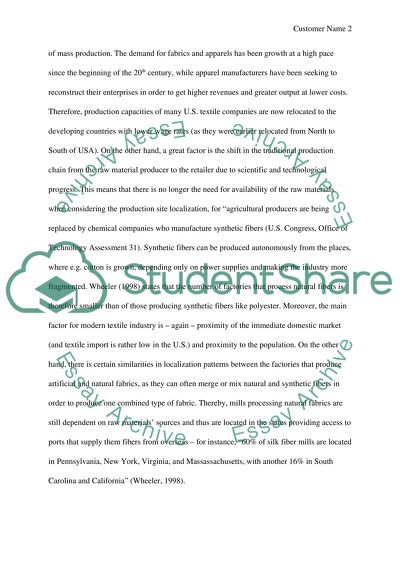U.S. Textile Industry Localization Essay Example | Topics and Well Written Essays - 500 words. Retrieved from https://studentshare.org/geography/1699783-us-textile-industry-localization
U.S. Textile Industry Localization Essay Example | Topics and Well Written Essays - 500 Words. https://studentshare.org/geography/1699783-us-textile-industry-localization.


